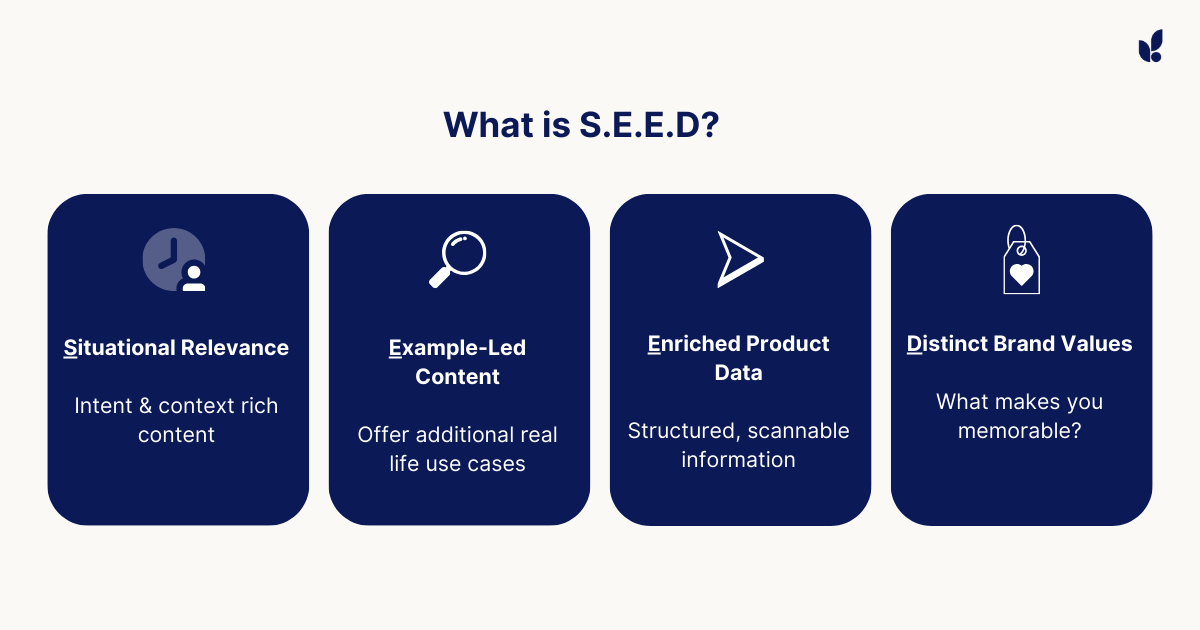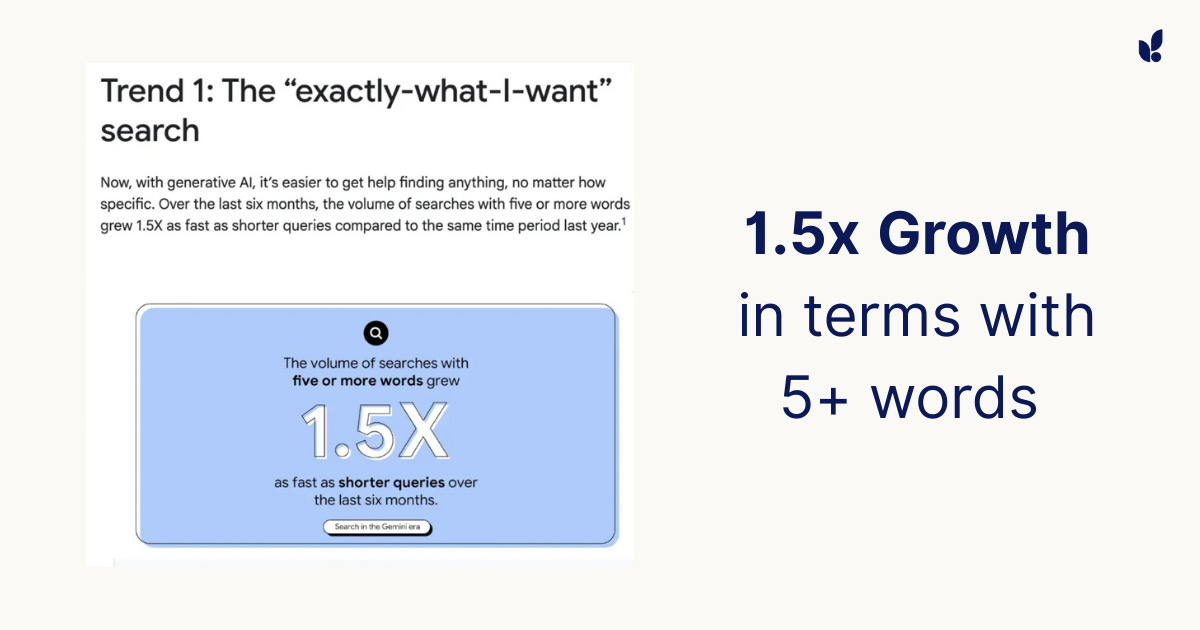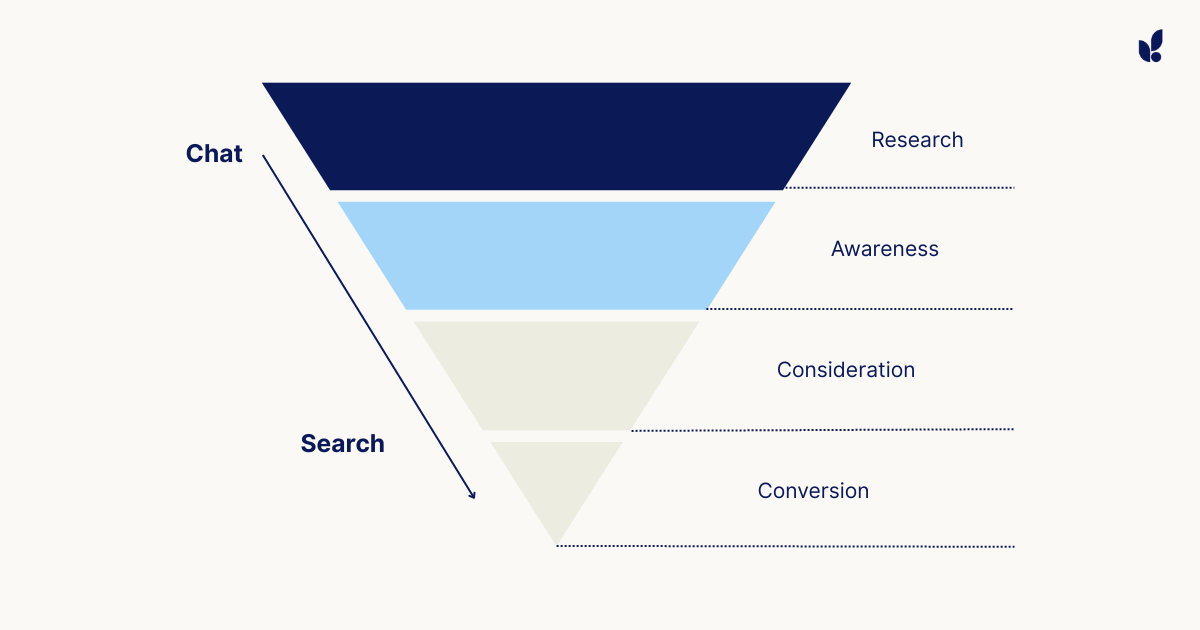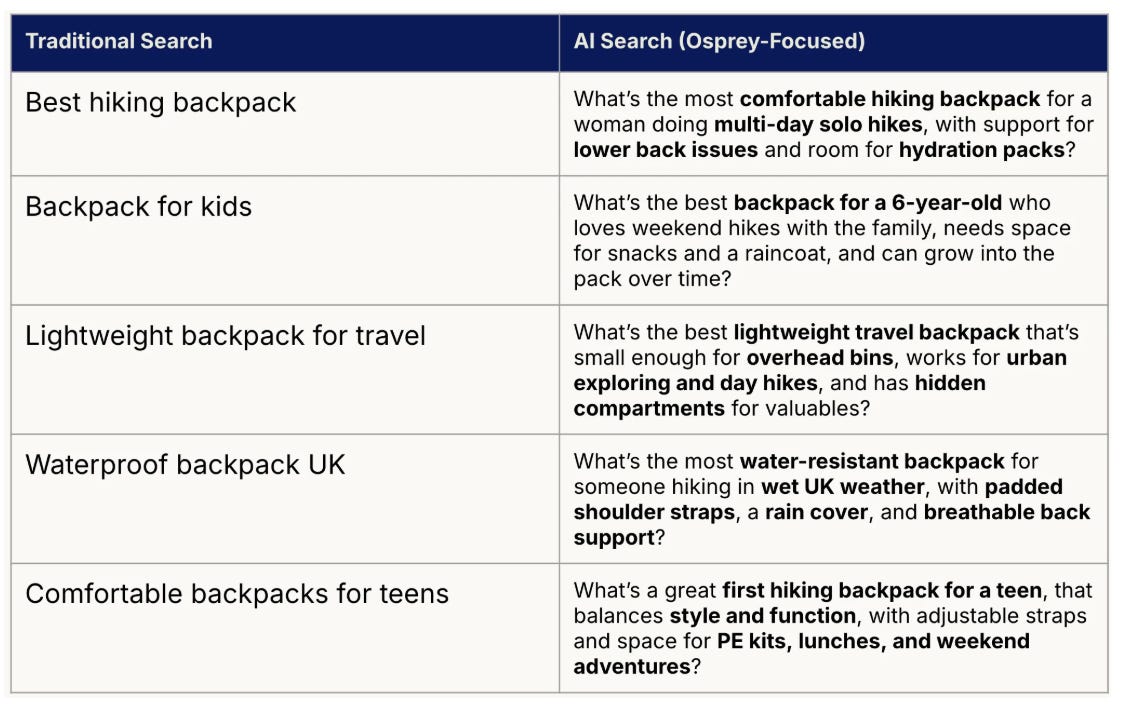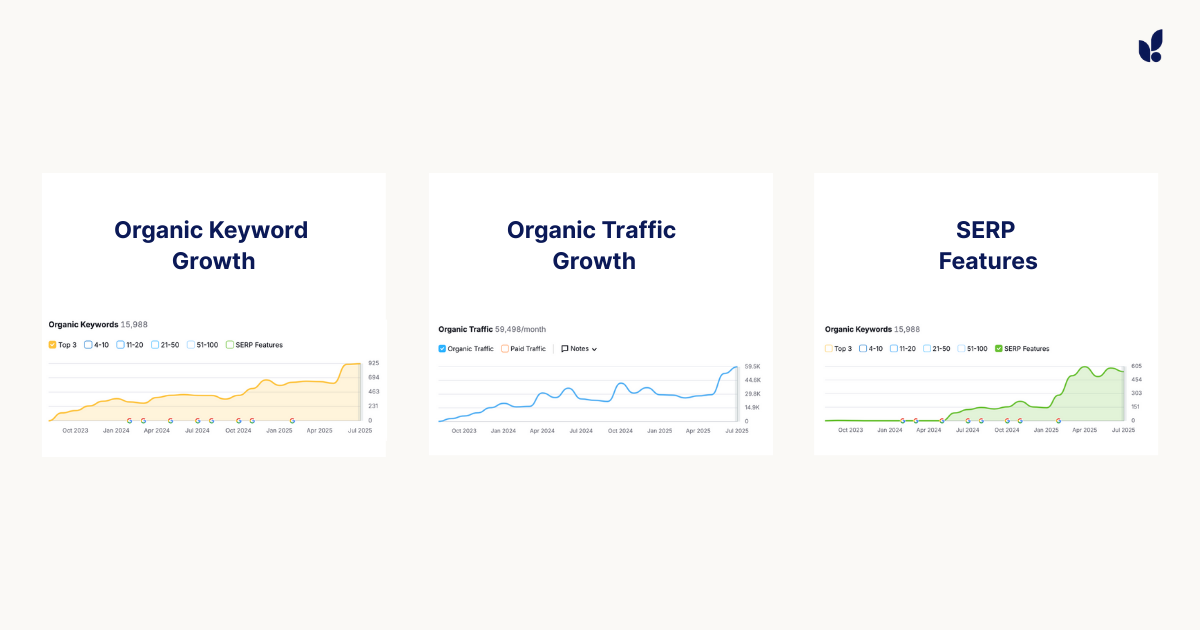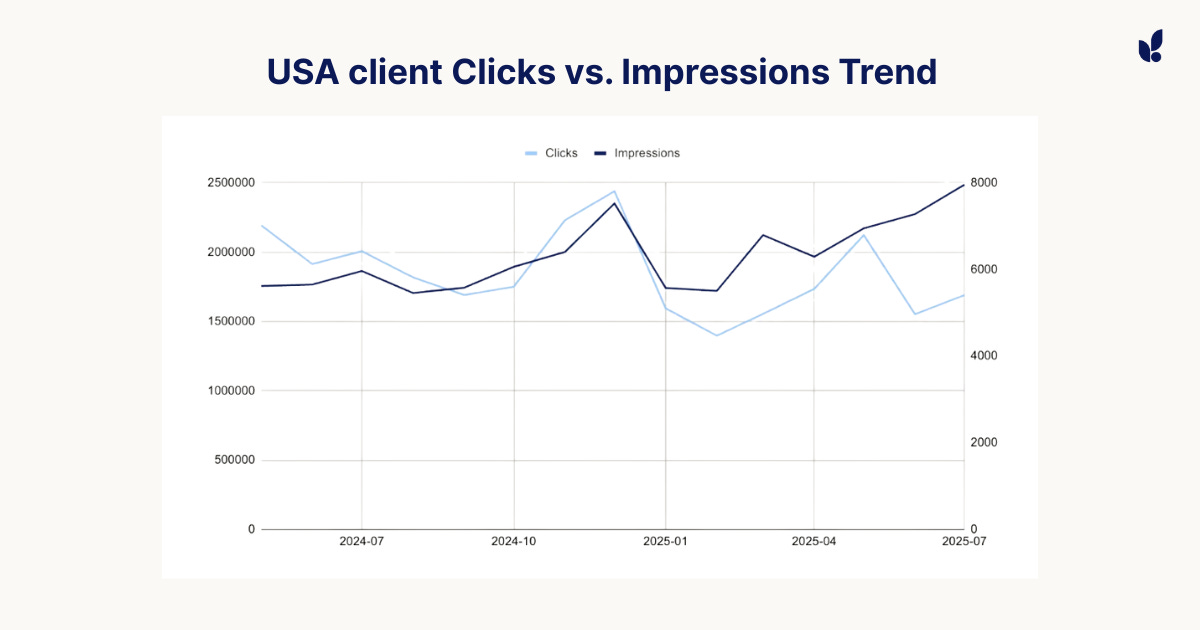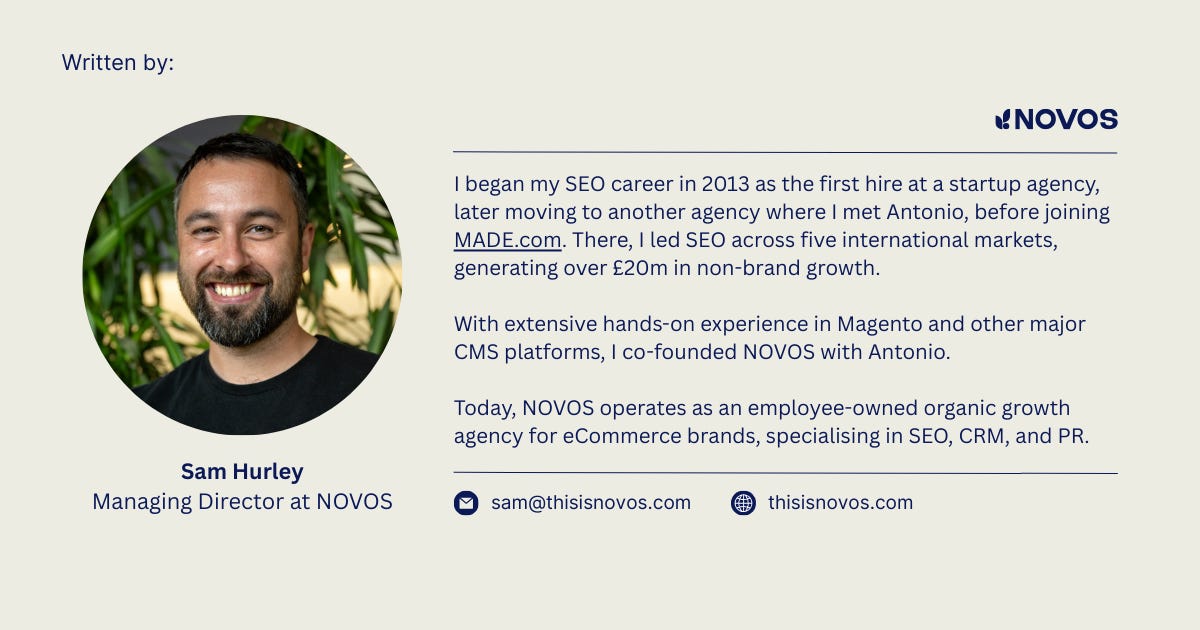AI Search: Future proofing your content
A mini-series focused on one critical question
In this new era of AI Search - where a potential customer can take a picture of their bookcase and ask "What should I read next?" - marketers must adapt their content strategies to thrive in this expanding search landscape.
This post launches a mini-series focused on one critical question:
"How do eCommerce brands future-proof their content for AI Search?"
Today we're introducing you to our content framework for AI Search.
The name of the framework leans into the 'organic' aspect of search. And, as you might expect from an agency, our framework comes with a catchy name: SEED.
Here’s what you can expect in the coming weeks for each deep dive:
Week 1: Situational Search
GPT has transformed the way customers search. Search terms are now longer and way more specific, include images of their surroundings and, as a result, expand the overall quantity of searches.
The impact this has on a brand like Osprey is illustrated below. In traditional search we called ‘long tail’ estimated 3-4 words - now search terms are becoming paragraphs and way more chat-like.
How AI Search is changing keywords and search behaviour:
This is what Situational Search is all about, so as an eCommerce brand - how do you capitalise on this?
We answer this question in week one of the series.
Week 2: Experienced Expert-Led
AI-created content requires minimal effort to produce, resulting in a low barrier to entry. Today, any brand can mass-produce content, but this often leads to generic content that fails to engage readers.
While Google may initially rank this AI-generated content, the poor engagement metrics will naturally cause it to drop from competitive rankings over time.
In part two of our series, we'll explore how to leverage AI-generated content effectively -avoiding the generic approach that even a start up with zero-resource can replicate.
Week 3: Enhanced Product Data
A key trend affecting eCommerce SEO strategies is that Google is now positioning itself as the Product Listing Page (PLP), which means brands need to place greater emphasis on Product Detail Pages (PDPs) than before.
PLP optimisation still plays a role as long as traditional search results (the 10 blue links) remain relevant (which we think they will for many years to come).
See this data below from one of our USA clients.
All our secondary metrics (keyword rankings, visibility) are through the roof for their PLPs.
However, when you break this down into primary metrics (Clicks + Impressions), we can see a sharp shift in collection page traffic down with impressions continuing to scale. In 2024, clicks exceeded impressions (in the chart), but today they have fallen significantly below. This is despite us over doubling the visibility of collection pages + the quantity of keywords in the top 3.
So the brand is more visible across search for these commercial pages, but the nature of AI Search means there are less clicks.
As we shift our focus towards PDPs, the second E of the SEED model - Enhanced product data - becomes crucial. This involves enriching product pages with detailed factual information, implementing even more schema markup, and optimising PDPs for better discovery.
This ensure we’re still keeping focus on clicks and commercial terms. The data below from Getstat show that P1 rankings on commercial SERPs are still dominated by Organic results and product feeds ie not the AIO overviews that are killing clicks.
Week 4: Distinct Brand Values
In the final part of this series, we'll focus on brand identity. In previous posts, we've discussed SEO evolving into a brand channel. These earlier discussions primarily examined the broader shifts in search behaviour (decreased clicks, increased impressions) and how to measure success in this new landscape. Our final SEED instalment will explore strategies for highlighting your brand's unique selling points throughout your site. This approach helps AI models distinguish you from competitors and better match your offerings to the search terms and values of potential customers.
Can’t wait for the end of the series? Get in touch and we can create a bespoke strategy for you.
In the meantime, please share this post with fellow eCommerce leaders so they don’t miss out on better understanding how to future proof their content for AI Search.




